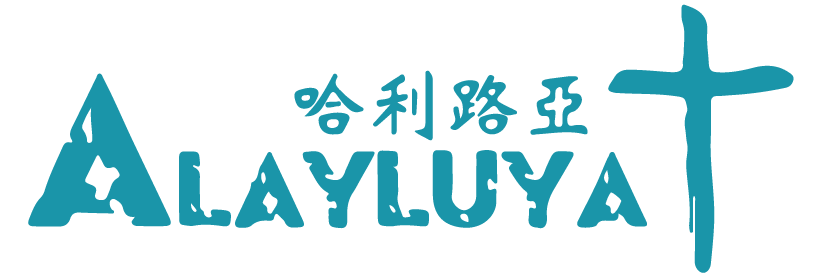
Matthias Gerung: Angels Holding the Four Winds / The Sealing of the 144,000
Revelation 7:1-8 in Ottheinrich Bible c.1530-32
啟示錄主體的信(啟四1–廿二5),是以三個「七」的系列(七印、七號角、七碗)來組成骨幹。在上帝因祂的創造被四活物和廿四個長老稱讚之後(啟四),羔羊就因祂的救贖而被所有受造物讚美(啟五)。此後,羔羊打開七個印,來回答剛才這兩個天上敬拜場景所帶出的問題:如果上帝的創造如此美好,為甚麼還需要救贖(因此羔羊要被殺)呢?
七印之中的每一個,都是由羔羊依次逐一打開的。每打開前四個印中的一個時,就出現一個活物,並且有聲音呼喚一隻以顏色來分辨的馬出來,接著就出現了一些不良的結果。
應用解釋聖經的最基本原則,即從上下文尋其意義,四活物就是上帝賦予人的四個屬性(結一5,8):人類要以威嚴(獅)來統治上帝的創造,以忠誠(牛)彼此服侍,並通過智慧(人)帶來受造界的不斷更新(飛鷹)。但當人類運用他們自己的工具,就是召喚「馬匹」的時候,相反的事就發生。
他們試圖去用反覆征服來得回失去了的威嚴──白馬,相互屠殺──紅馬,引至稀缺──黑馬,最终帶來死亡──蒼白病馬。人類扭曲了上帝在他們身上的形象,為上帝的創造和自己帶來了災難。
在下一個印(第五)中,一小撮人因抵抗這些破壞而殉道。上帝回應他們要將破壞修復的請求(申冤),保證全然接納他們(給他們白色衣),但堅持將要有更多人透過像這些殉道者的犧牲,去完成上帝從起初就交給人類的工作。
當羔羊打開第六個印時,上帝展示了那些破壞了祂的創造秩序(山嶺海島都被挪移離開本位)的人,是如何害怕上帝的憤怒(啟六12-17),這也許是因為他們仍有上帝印在他們身上的、不可磨滅的形象(之前的四活物)。這些恐懼將成為上帝呼召他們悔改的基礎。
在第六個印的餘下部份中,經文說出兩個互相緊扣的事件。首先,144,000人被蓋上印,明確地要他們保護上帝創造的秩序(凡是有他們的出現,破壞者就不可傷害地、海、樹木……〔啟七3〕)。而這144,000人,又再變成一群數之不盡的人,去回應羔羊。通過這些人,上帝對亞伯拉罕的應許,要地上的萬族都要因他得福,就得以實現。從上下文的連貫來看,這些數不盡的人,跟那144,000人有相同的使命,並被應許得到上帝最終的接受。因此,當這些人完成照顧上帝創造的任務時,在祭壇下的殉道者的冤情(第五個印)就得以洗雪。
在這六個印中,人類一直是故事的主人翁:他們被造是為了要照顧上帝創造的秩序,但可惜他們卻沒有做好他們的任務。然而當中有些人,仍然堅持為上帝作中流砥柱,保護上帝創造的秩序,但卻為此受苦。而上帝在人裡面的形象,也叫其他人懼怕上帝的憤怒。可見上帝在整個歷史中,選擇了人類來照顧衪創造的秩序。而這使命將會繼續,直到工作完成。這是頭六個印一氣呵成的連貫信息。
啟示錄通過各種意象,重述了創世記的基礎教導。
但在我們這個關愛受造世界的信息中,耶穌在哪裡?上帝的工作,是通過從天上對人類說話的方式進行。在啟示錄中,祂所說的「一小時」,是用來表達「意想不到的快速」的意思(巴比倫在一小時內滅亡〔參啟十七12;十八10,17,19〕)。而第七個印打開的時侯,在天有上半小時的沉默(啟八1),用來表明上帝的不耐煩,要盡快帶來以耶穌為中心的七個號角,即安息的主。
下回為大家分解!
「關愛受造世界與福音」會議系列文章之四。
作者為前環保署高級主任,現著力研究環保神學。
本文原文為英文,中文版本由梁柏强翻譯。
英文原文:
Revelation of Seven Seals – God’s Creation Agenda (Rev 6:1 – 8:1)
Christopher Fung
Revelation’s main letter (4:1-22:5) consists of a backbone comprising three series of “seven” (seals, trumpets and bowls). After God is praised by four living creatures and 24 elders for his creation (Rev 4), the Lamb is praised by all creatures for his redemption (Rev 5). Thereafter, the Lamb opens the seven seals to answer the question arising from these two heavenly worship scenes: why is there a need for redemption if God’s creation is so good?
Each of the seven seals is opened by the Lamb. Opening each of the first four seals brings forth a living creature. Thereafter, a horse, differentiated by its colour, is called forth. This brings undesirable effects. Applying the most basic criterion for understanding the Bible (read the text contextually), the four living creatures can be seen as four aspects of human nature (Eze 1:5, 8): humans are to rule God’s creation with majesty (lion), in loyalty (ox), through wisdom (human) to bring about continual renewal (flying eagle). But instead, the exact opposite results when humans wield their tools, i.e. call forth their work-horses (repeated conquering to substitute for lost majesty – white horse; mutual slaughtering – red horse; scarcity – black horse; death – ashen horse). Humans have perverted God’s image in them to rain disasters on God’s creation and ultimately themselves.
In the next seal (5th), a remnant stands up to these abuses and suffers martyrdom. In response to their petition to set things right, God assures them of his acceptance (give them white robes), but insists that more people will have to sacrifice like these martyrs to complete the work God has given mankind from the very beginning.
When the Lamb opens the sixth seal, God shows how people who have damaged his creation (move mountains and islands out of their places) are afraid of God’s wrath (6:12-17), presumably because of the ineradicable image God has stamped on them (previous four living creatures). This fear would form the basis of God’s call for their repentance.
In the remainder of the sixth seal, two interlocking episodes are given. First, 144,000 people are sealed explicitly to protect God’s created order (the destroyer cannot harm the earth or the seas or the trees in their presence … 7:3). Through these 144,000 morphing into an uncountable multitude who respond to the Lamb, God’s promise to Abraham to bless all the families of the earth, are fulfilled. From the context, this uncountable multitude have the same mission as the 144,000 and are promised God’s ultimate acceptance. The suffering of the martyrs under the altar in the 5th seal is thus avenged when these people complete their task of caring for God’s creation.
Throughout these six seals, humans are the protagonists: they were made to look after God’s created order, but failed in their mission. Yet some still resist the attack on God’s creation, but suffer. The knowledge of God causes others to fear God’s wrath. God has chosen people throughout history to fend for his created order and will continue until the job is done. Such is the coherent message from the first six seals.
Revelation thus recaps Genesis’ foundational teaching through symbols.
But where is Jesus in our creation care message?
God works through speaking to humans from heaven. One hour is used to convey unexpected swiftness in Revelation (Babylon has fallen in one hour; Rev 17:12; 18:10, 17, 19). Opening the seventh seal brings about half hour silence in heaven (Rev 8:1). This shows God’s impatience to bring in the seven trumpets which are centred in Jesus, Lord of the Sabbath. Stay tuned.
Reference: Christopher Fung (2017) “The Lord of the Sabbath Opens His Book of Revelation” Wipf and Stock, 241pp.
文章轉載於『時代論壇』,原文鏈接:
https://christiantimes.org.hk/Common/Reader/News/ShowNews.jsp?Nid=159138&Pid=104&Version=0&Cid=2241&Charset=big5_hkscs
關注我們:時代論壇eLand







